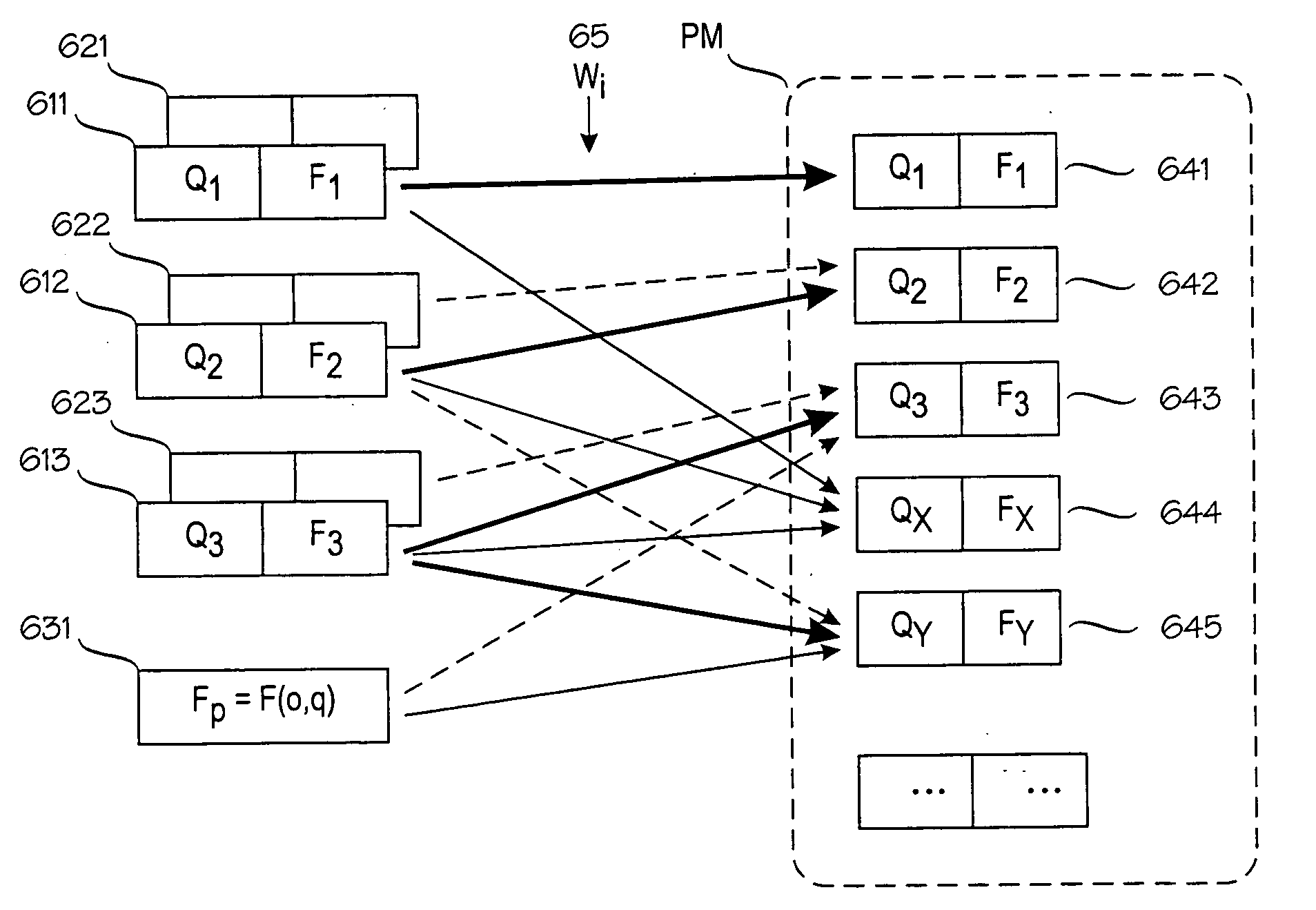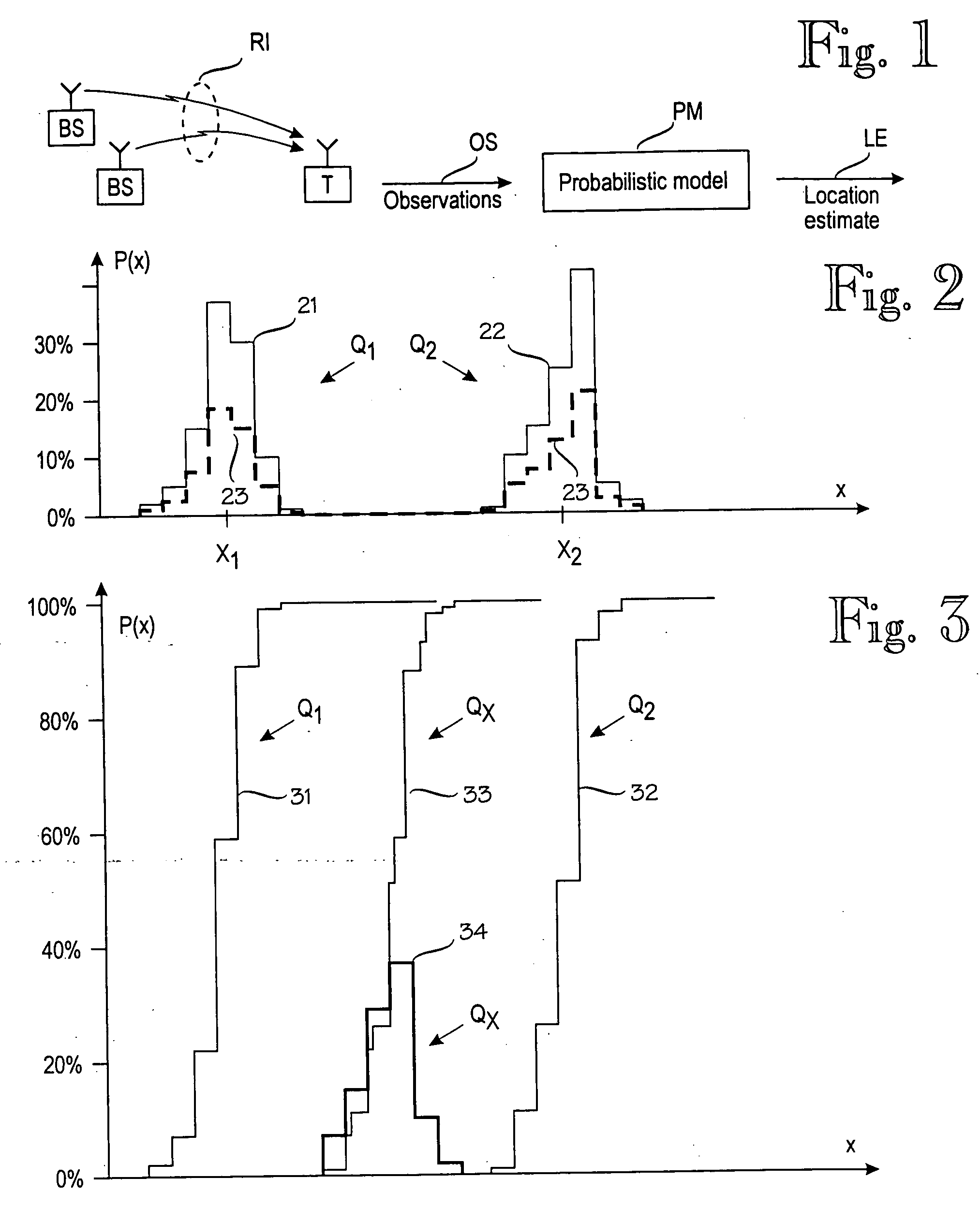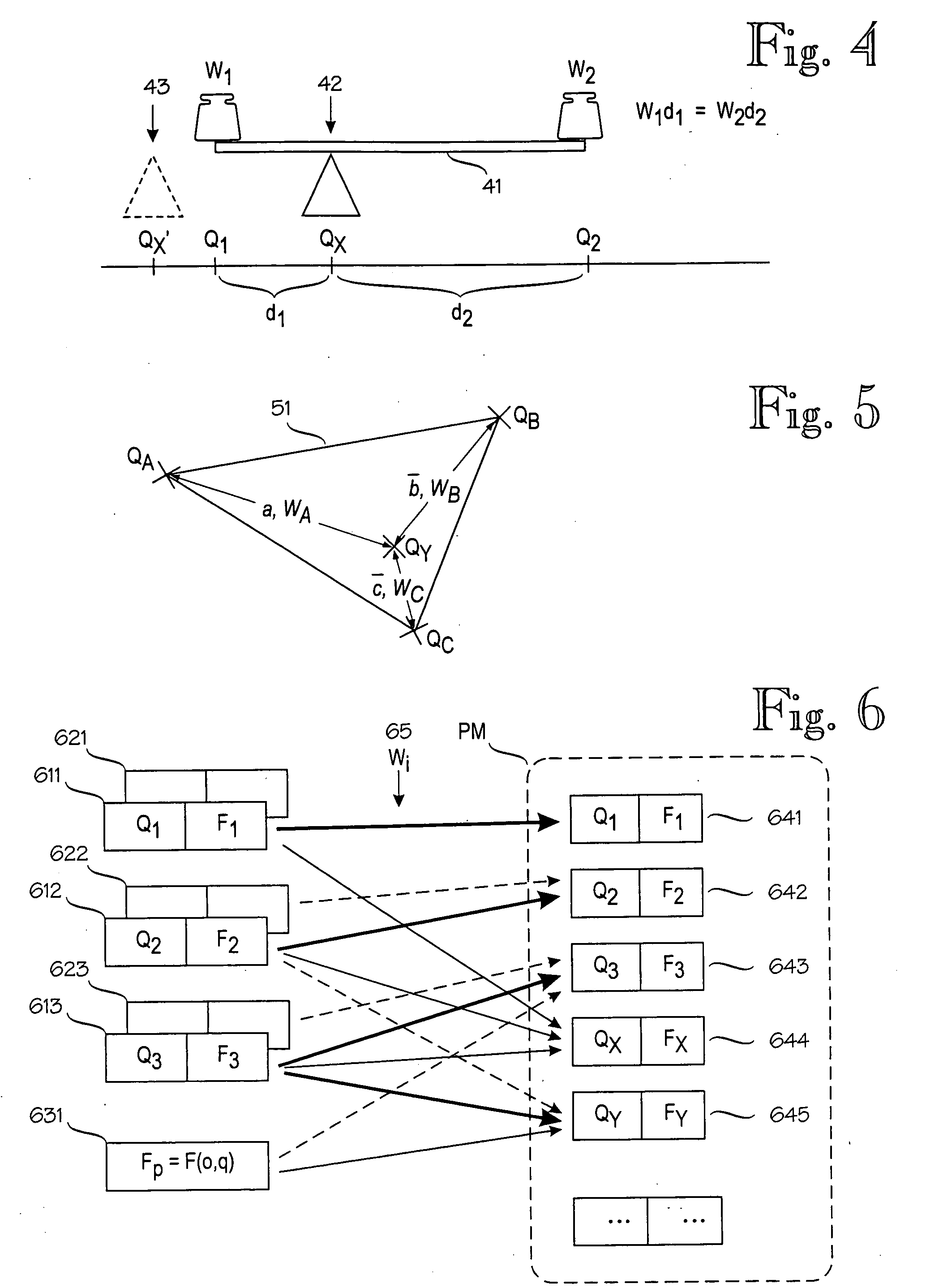Probabilistic model for a positioning technique
a probability model and positioning technology, applied in direction finders using radio waves, instruments, wireless communication, etc., can solve the problems of difficult automatic processing, large number of sample points obtained by physical calibration, and inability to predict signal values between two locations
- Summary
- Abstract
- Description
- Claims
- Application Information
AI Technical Summary
Benefits of technology
Problems solved by technology
Method used
Image
Examples
Embodiment Construction
[0034]FIG. 3 illustrates the principle of the invention. The invention is based on the idea of combining the inverse cumulative distribution functions of expected signal values at various locations, instead of combining the signal values or their probability distributions. FIG. 3 is drawn to the same scale as FIG. 2, and the x-axis are aligned. Curve 31 represents the cumulative distribution function for location Q1. For each nonzero probability value in probability distribution 21, there is a corresponding step in the cumulative distribution function 31. Similarly, curve 32 represents the cumulative distribution function for location Q2. Curve 33 is a cumulative distribution function for a location QX (such as a new sample point) between locations Q1 and Q2. In this example, the new sample point QX is assumed to be in the middle of a straight line from Q1 to Q2, and the cumulative distribution function 33 is created by the following algorithm: for each of several dependent variable...
PUM
 Login to View More
Login to View More Abstract
Description
Claims
Application Information
 Login to View More
Login to View More - R&D
- Intellectual Property
- Life Sciences
- Materials
- Tech Scout
- Unparalleled Data Quality
- Higher Quality Content
- 60% Fewer Hallucinations
Browse by: Latest US Patents, China's latest patents, Technical Efficacy Thesaurus, Application Domain, Technology Topic, Popular Technical Reports.
© 2025 PatSnap. All rights reserved.Legal|Privacy policy|Modern Slavery Act Transparency Statement|Sitemap|About US| Contact US: help@patsnap.com



